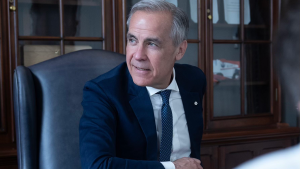The reopening of B.C.’s Coquihalla Highway in just 35 days after devastating storm damage has been hailed by Transportation Minister Rob Fleming as one of the most remarkable feats of engineering in recent memory.
“The response by our maintenance contractors, our subcontractors, our engineers to get the Coquihalla Highway reopened is as unprecedented as the storms that damaged it in the first place,” Fleming said.
Caroline Andrewes, an engineer and president of the B.C’s Association of Consulting Engineering Companies (ACEC-BC), explained while it was indeed remarkable, it’s just the beginning of a long journey to repair and upgrade damaged highway infrastructure.
Andrewes noted even day-to-day roadbuilding and engineering on the Coquihalla in good conditions is highly complex.
“I think the main thing to keep in mind is what a dynamic situation this was,” said Andrewes. “The scope and scale of this disaster is beyond anything this generation has experienced. The Coquihalla was already quite difficult terrain. It has complex geography with rivers and mountains converging and it can get extreme weather. It also gets lots of traffic.”
With heavy pressure to also reconnect critical rail and pipeline infrastructure, crews and engineers had to work in the middle of extreme weather conditions which even washed away some of their early repairs and continued to damage infrastructure. Crews also had to work on prioritizing access, a major challenge on the Coquihalla which has few access points.
“To some extent it is an end-to-end highway with only a few spots to get on or off,” said Andrewes. “Being able to get in there with the right people and expanding the access over a reasonable distance to reconnect things was quite a challenge.”
Once the sites were accessible the partnership between the ministry engineering team and the heavy equipment companies was critical, said Andrewes.
“All partners worked with a common purpose,” she said. “The commitment of the heavy equipment folks to get the job done was outstanding.”
Andrewes added while the effort and outcome is remarkable, the work done is temporary and serves to reconnect critical supply routes and provide space for the ministry and their partners to consider longer term recovery of the corridor. However, the much more work lies ahead.
“Our minds are already on the next phase,” said Andrewes. “Looking ahead, there are considerable challenges. This has been really remarkable. Sure, nobody in engineering thought the road could be back in service in this short of time, but being very clear, this is not the end of the effort. The next phase will be more challenging and there are difficult decisions to make. It will be a long process and again we will have to have that spirit of co-operation and determination and have a clear strategy about what we want to accomplish as an integrated team.”
Andrewes said the ministry will now lead discussions on what will happen next, what the quality of the highways are, what areas should be prioritized, what areas can be shored up, what infrastructure might need to be relocated to more stable elevations and more.
She explained so many areas were impacted that the entire system of infrastructure, including municipal infrastructure, will need to be assessed.
“That is a longer vision,” she said. “It is looking at all those systems together in context and making decisions about how they interact, where there is risk and what measures can be taken to mitigate impacts in the future.”
She added while the reopening of the highway to commercial traffic was an incredible feat, it is the first step in a long journey.
“We will take this win, but we aren’t done yet,” said Andrewes.
Follow the author on Twitter @RussellReports.











Recent Comments
comments for this post are closed